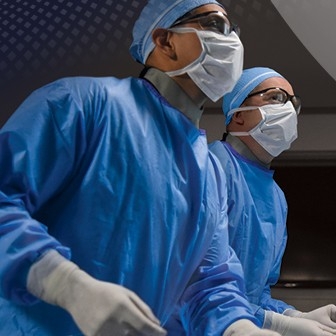RADIAL ACCESS FOR CORONARY INTERVENTION
Transradial Artery Access (TRA) for percutaneous coronary intervention (PCI) is proven to reduce associated bleeding and vascular complications; especially in patients with acute coronary syndromes (ACS).¹ Use of TRA for coronary angiography and PCI is also associated with improved measures of quality of life and reduced costs compared with Transfemoral Access. A growing body of evidence supports adoption of TRA to improve ACS-related outcomes, to improve healthcare quality, and to reduce cost.¹
REDUCE COMPLICATION RISK

Enhance patient experiences
Improve clinical outcomes
INCREASE EFFICIENCIES

- Achieve same-day discharge
- Decrease costs
- Improve throughput
EXPAND CLINICAL CAPABILITIES

Treat more patients if femoral access isn't feasible
RESOURCES
Coronary Artery Disease, or CAD, develops when the major blood vessels in the heart (coronary arteries) become damaged or diseased. Cholesterol-containing deposits (plaque) in arteries and inflammation are usually to blame for coronary artery disease.2 Below are a few articles demonstrating the benefit of radial access coronary procedures.
Need More Information?
We can help.
REFERENCES
- Valgimigli M, MATRIX Investigators. Radial versus femoral access in patients with acute coronary syndromes undergoing invasive management: a randomised multicentre trial. Lancet. 2015; 385:2465–2476.
- CDC, NCHS. Underlying Cause of Death 1999-2013 on CDC WONDER Online Database, released 2015. Data are from the Multiple Cause of Death Files, 1999-2013, as compiled from data provided by the 57 vital statistics jurisdictions through the Vital Statistics Cooperative Program. Accessed Feb. 3, 2015: https://wonder.cdc.gov/wonder/help/ucd.html.





